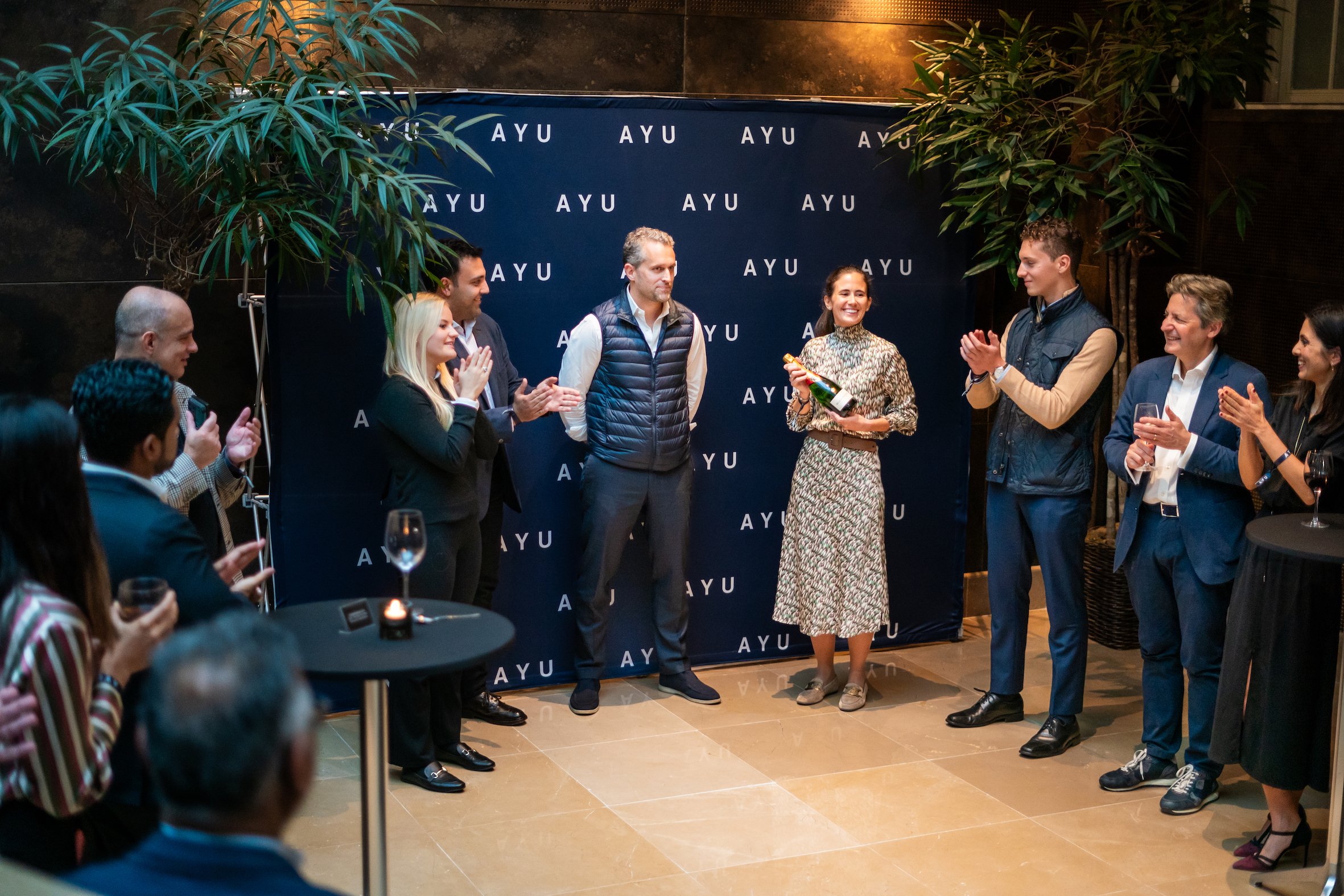AYU Member Fund Focus: Whale Capital
An interview with Maria Guinda, CIO of Whale Capital’s Global Digital Assets Fund
In October of 2023 during London Hedge Fund Week, investment industry professionals focussed on crypto gathered for another AYU Digital Asset Fund Forum (DAFF) with great excitement. We hosted fund managers from some of the most promising emerging digital funds for a full day of thought provoking panel discussions, concentrated networking sessions and the highly anticipated AYU Pitch-Off. In this interview, we have the privilege of speaking with Maria Guinda, the CIO of Whale Capital’s Global Digital Assets Fund, who emerged as the pitch off winner of the day, delivering a compelling and extremely knowledgeable pitch that captivated the judging panel and blew the audience away.
Hi Maria, tell us about the Global Digital Assets Fund (GDAF)
The GDAF is an actively managed quantitative long-only crypto fund. Our main objective with this inaugural fund is to provide institutional-grade exposure to the rapidly evolving blockchain technology, focusing exclusively on native tokens positioned to lead the industry in the future. We maintain a long-only strategy and refrain from leveraging or investing in blockchain-related securities. In terms of risk management, we believe it’s premature to concentrate our investments on a select few projects given the early stage of the technology.
History has shown that initial industry dominators are often replaced by others. Therefore, our portfolio is quantitatively diversified across 24 projects, subject to active and regular rebalancing. This approach allows us to navigate the volatile landscape effectively. Essentially, our portfolio operates similar to a liquid venture capital fund, offering exposure to early-stage projects with the flexibility to adjust based on project traction.
Operationally, we’ve built a resilient product with top-tier providers, redundant processes, and no single point of failure. Replicating the operational setup of traditional funds was a meticulous process that took nearly a year to implement before launching the fund, but it was essential to ensure we developed a watertight product for institutional clients.
Why blockchain?
Our vision is that blockchain represents the next evolutionary step for the internet. In the initial phase, we could only consume information through static websites. The current phase allows us to create and share content, albeit with ownership and monetization largely controlled by major tech firms. However, in the upcoming phase, facilitated by blockchain technology, we’ll have the ability to assert ownership over our data, transfer it across platforms, and potentially monetize it ourselves. This marks a significant paradigm shift, enabling individuals to own digital assets without reliance on centralized intermediaries. This transformation will reshape existing business models, such as social media and news, streamline processes like payments, and unlock new opportunities akin to how the internet changed how we now consume music or video.
We are still in a very incipient stage with blockchain technology. The infrastructure is not fully built, and the applications are still clunky and difficult to use, making the technology accessible primarily to technically savvy individuals. This parallels the early days of the commercial phase of the internet in the 1990s when speed and navigation experience were suboptimal. The current adoption of blockchain is at a point similar to where the internet was in 1997. If the growth trend continues, we could see the number of users multiply by five. In such a scenario, due to the networking effect, the value of some blockchains could grow exponentially to this number. This is an incredible investment opportunity.
Why did you choose this particular strategy?
One of the key factors shaping our fund’s strategy was the evolving state of the digital assets’ infrastructure. Given this context, our priority for this first fund was to steer clear of adding unnecessary layers of risk. Counterparty risk management is just as crucial as managing market risks within this asset class, and currently, we believe it’s not fully resolved. As a result, we honed in on a strategy aimed at mitigating such risks while seeking alpha through a quantitative investment approach.
Could you elaborate on your investment process and how does the fund generate alpha?
When examining the crypto market, two of its most distinctive features are its volatility and the correlation among assets. While volatility can typically be managed through diversification, the high correlation among assets in this class poses a challenge. Traditional risk mitigation methods, like diversification by market cap or sector, often prove inadequate in this asset class. We’ve observed that employing such methods results in both a lower Sharpe ratio and a higher correlation with bitcoin (typically the market benchmark) than investing in a single asset. Moreover, smaller projects introduce tail risk to the portfolio, meaning that while returns may not improve significantly when the market rises, they tend to drag down performance when the market declines.
Recognizing the need for a truly and efficiently diversified portfolio, we devised a strategy. Using our algorithmic models, we mapped out the market into correlation clusters to optimize returns and diversification.
Additionally, to enhance this process, we implemented a strict 15% maximum exposure rule for any individual token. This top-down analysis is complemented by an equally vital bottom-up fundamental assessment of each token, where we thoroughly examine every aspect of the project. As part of this qualitative filter, our research team evaluates whether developers are effectively solving the purported problems by engaging with the entire ecosystem, analyzing their incentives, and gauging adoption rates. Only projects with a clear plan to become a prominent blockchain in a specific field are included in the portfolio.
Could you give us a glimpse of the current portfolio and how is it positioned?
Currently, our portfolio is extensively diversified across 24 tokens. Our investment in Bitcoin and Ethereum, the two largest projects in the crypto space, represents less than 25% of our portfolio. This stands in stark contrast to their ~70% dominance in the market. Consequently, our portfolio is strategically aligned towards smaller infrastructure projects addressing scalability and interoperability challenges, which are gaining traction in providing enterprise solutions for large multinational companies.
Additionally, we have allocated smaller portions to emerging projects like DePin (Decentralized Physical Infrastructure Networks), which boast real-world applications and have the potential to disrupt specific industries. Our investments in these projects are smaller but asymmetrical, with capped downsides but exponential upsides.



